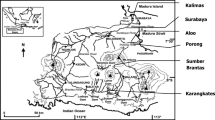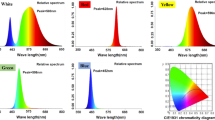Abstract
To assess their role in photoprotection in the crustacean zooplankton Daphnia spp., activities of the antioxidants catalase (CAT), superoxide dismutase (SOD), glutathione transferase (GST) and content of carotenoids (CAR) were studied in 4 Daphniaspecies from a total of 50 populations. Included in the survey were alpine and lowland populations of both pigmented and non-pigmented D. longispina, rock-pool and laboratory clones of D. magna and Arctic populations of the D. pulex/D. middendorffianacomplex. Most of the surveyed populations inhabit shallow ponds, and are thus highly exposed to UV-radiation during the summer. The results are primarily discussed in relation to antioxidants as possible protection against UV-radiation. D. pulex, D. middendorffianaand D. longispinaoccurred both as hyaline and pigmented (carapace melanization) morphs. The most notable inter-species differences were the high activity of CAT in the D. magnalab-clone, the low activity of GST in melanic animals from the D. pulexgroup and the high activity of SOD in D. longispinafrom a lowland humic pond. Contrary to expectations, we found no differences in antioxidant capacity between melanic and non-pigmented alpine D. longispina. Intraspecies variation in antioxidant activities was studied in relation to pond characteristics. Among the alpine populations of D. longispina there was a significant positive correlation between absorbance (300 nm) of the pond water and CAT activity, which could be related to ambient levels of photoinduced hydrogen peroxide production in these small water bodies. The data from this comparative study provide insight in photo-protective mechanisms in cladocera, and constitute a valuable basis for future research on pro-oxidant and antioxidant processes in alpine and arctic freshwater zooplankton.
Similar content being viewed by others
References
Abele, D., B. Burlando, A. Viarengo & H.-O. Pörtner, 1998. Exposure to elevated temperatures and hydrogen peroxide elicits oxidative stress and antioxidant response in the Antarctic intertidal limpet Nacella concinna. Comp. Biochem. Physiol. 120B: 425–435.
Bertling, C. J., F. Lin & A. W. Girotti, 1996. Role of hydrogen peroxide in the cytotoxic effects of UVA/B radiation on mammalian cells. Photochem. Photobiol. 64: 137–142.
Bradford, M. M., 1976. A rapid and sensitive method for the quantitation of microgram quantities of protein utilizing the principle of protein-dye binding. Anal. Biochem. 72: 248–254.
Buchner, T., D. Abele-Oeschger & H. Theede, 1996. Aspects of antioxidant status in the polychaete Arenicola marina: tissue and subcellular distribution, and reaction to environmental hydrogen peroxide and elevated temperatures. Mar. Ecol. Prog. Ser. 143: 141–150.
Byron, E. R., 1982. The adaptive significance of calanoid copepod pigmentation: a comparative and experimental analysis. Ecology 63: 1871–1886.
Claiborne, A., 1985. Catalase activity. In Greenwald, R. A. (ed.), Handbook of Methods for Oxygen Radical Research. CRC Press, Boca Raton: 283–284.
Clarke, A., 1983. Life in cold water: the physiological ecology of polar marine ectotherms. Oceanogr. mar. biol. Ann. Rev. 21: 341–453.
Cooper, W. J., D. R. S. Lean & J. H. Carey, 1989. Spatial and temporal patterns of hydrogen peroxide in lake waters. Can. J. Fish. aquat. Sci. 46: 1227–1231.
Cossins, A. R. & C. L. Prosser, 1978. Evolutionary adaptations of membranes to temperature. Proc. natl. Acad. Sci. U.S.A. 75: 2040–2043.
Dahlback, A., T. Henriksen, S. H. H. Larsen & K. Stamnes, 1989. Biological UV-doses and the effect of an ozon layer depletion. Photochem. Photobiol. 49: 621–625.
Dahlback, A. & K. Stamnes, 1991. A new spherical model for computing the radiation field available for photolysis and heating at twilight. Planet Space Sci. 39: 671–683.
Di Giulio R. T., P. C. Washburn, R. J. Wenning, G. W. Winston & C. S. Jewell, 1989. Biochemical responses in aquatic animals: a review of determinants of oxidative stress. Environ. Toxicol. Chem. 8: 1103–1123.
Fuchs, J. & L. Packer, 1991. Photooxidative stress in the skin. In Sies, H. (ed.), Oxidative Stress: Oxidants and Antioxidants. Academic Press, London: 559–583.
Fuchs J., M. E. Huflejt, L. M. Rothfuss, D. S. Wilson, G. Carcamo & L. Packer, 1989. Impairment of enzymic and nonenzymic antioxidants in skin by UVB irradiation. J. Invest. Dermatol. 93: 769–773.
Green J., 1957. Carotenoids in Daphnia. Proc. r. Soc. London Ser. B 147: 392–401.
Habig, W. H., M. J. Pabst & W. B. Jakoby, 1974. Glutathione S-transferases. The first enzymatic step in mercapturic acid formation. J. Biol. Chem. 249: 7130–7139.
Hairston, N. G. Jr., 1978. Carotenoid photoprotection in Diaptomus kenai. Verh. int. Ver. Limnol. 20: 2541–2545.
Hairston, N. G. Jr., 1979. The adaptive significance of color polymorphism in two species of Diaptomus (Copepoda). Limnol. Oceanogr. 24: 15–37.
Hairston, N. G. Jr., 1981. The interaction of salinity, predators, light and copepod color. Hydrobiologia 81: 151–158.
Halliwell, B. & J. M. C. Gutteridge, 1986. Oxygen free radicals and iron in relation to biology and medicine: some problems and concepts. Arch. Biochem. Biophys. 246: 501–514.
Hebert, P. D. N. & C. J. Emery, 1990. The adaptive significance of cuticular pigmentation in Daphnia. Funct. Ecol. 4: 703–710.
Hessen, D. O., 1993. DNA-damage and pigmentation in alpine and arctic zooplankton as bioindicators of UV-radiation. Verh. int. Ver. Limnol. 25: 482–486.
Hessen, D. O., 1994. Daphnia responses to UV-light. Arch. Hydrobiol. Beih. Ergebn. Limnol. 43: 185–195.
Hessen, D. O., 1996. Competitive trade-off strategies in Arctic Daphnia linked to melanism and UV-B stress. Polar Biol. 16: 573–579.
Hessen, D. O. & K. Sørensen, 1990. Photoprotective pigmentation in alpine zooplankton populations. Aqua Fenn. 20: 165–170.
Hessen, D. O., H. J. De Lange & E. Van Donk, 1997. UVinduced changes in phytoplankton cells and its effects on gazers. Freshwat. Biol. 38: 513–524.
Hessen, D. O., J. Borgeraas, K. Kessler & U. H. Refseth, 1999. UV-B susceptibility and photoprotection of Arctic Daphnia morphotypes. Polar Res. 18: 345–352.
Hiratsuka, A., H. Saito, K. Hirose & T. Watabe, 1999. Marked expression of glutathione S-transferase A4-4 detoxifying 4-hydroxy-2(E)-nonenal in the skin of rats irradiated by ultraviolet B-band light (UVB). Biochem. Biophys. Res. Commun. 260: 740–746.
Hobæk, A. & H. G. Wolf, 1991. Ecological genetics of Norwegian Daphnia. II. Distribution of Daphnia longispina genotypes in relation to short-wave radiation and water colour. Hydrobiologia 225: 229–243.
Karentz, D., 1994. Ultraviolet tolerance mechanisms in Antarctic marine organisms. In Weiler, C. A. & P. A. Penhale (eds), Ultraviolet Radiation in Antarctica: Measurements and Biological Effects. Antarctic Research Series, Vol. 62. American Geophysical Union, Washington DC: 93–110.
Kerb, R., J. Brockmöller, T. Reum & I. Roots, 1997. Deficiency of glutathione S-transferases T1 and M1 as heritable factors of increased cutaneous UV sensitivity. J. Invest. Dermatol. 108: 229–232.
Kerr, J. B. & C. T. McElroy, 1993. Evidence for large upward trends of ultraviolet-B radiation linked to ozone depletion. Science 262: 1032–1034.
Ketterer, B. & D. J. Meyer, 1989. Glutathione transferases: a possible role in the detoxication and repair of DNA and lipid hydroperoxides. Mutat. Res. 214: 33–40.
Kirk, J. T. O., 1994. Optics of UV-B radiation in natural waters. Arch. Hydrobiol. Beih. Ergebn. Limnol. 43: 1–16.
Krinsky, N. I., 1993. Actions of carotenoids in biological systems. Annu. Rev. Nutr. 13: 561–587.
LeBlanc, G. A. & B. J. Cochrane, 1987. Identification of multiple glutathione S-transferases from Daphnia magna. Comp. Biochem. Physiol. 88B: 39–45.
Luecke, C. & W. J. O'Brien, 1983. Photoprotective pigments in a pond morph of Daphnia middendorffiana. Arctic 36: 365–368.
Malloy, K. D., M. A. Holman, D. Mitchell & H. W. Detrich III, 1997. Solar UVB-induced DNA damage and photoenzymatic DNA repair in antarctic zooplankton. Proc. natl. Acad. Sci. U.S.A. 94: 1258–1263.
Masaki, H., T. Atsumi & H. Sakurai, 1995. Detection of hydrogen peroxide and hydroxyl radicals in murine skin fibroblasts under UVB irradiation. Biochem. Biophys. Res. Commun. 206: 474–479.
McKinley, A. F. & B. L. Diffey, 1987. A reference action spectrum for ultraviolet induced erythema on human skin. Commission Internationale de l'Eclaire: 17–22.
Morrill, A. C., E. N. Powell, R. R. Bidigare & J. M. Shick, 1988. Adaptations to life in the sulfide system: a comparison of oxygen detoxifying enzymes in thiobiotic and oxybiotic meiofauna (and freshwater planarians). J. Comp. Physiol. B 158: 335–344.
Morris, D. P., H. Zagarese, C. E. Williamson, E. G. Balseiro, B. R. Hargreaves, B. Modenutti, R. Moeller & C. Queimalinos, 1995. The attenuation of solar UV radiation in lakes and the role of dissolved organic carbon. Limnol. Oceanogr. 40: 1381–1391.
Murali, N. S., A. H. Teramura & S. K. Randall, 1988. Response differences between two soybean cultivars with contrasting UVB radiation sensitivities. Photochem. Photobiol. 48: 653–657.
Schindler, D. W., P. J. Curtis, B. R. Parker & M. P. Stainton, 1996. Consequences of climate warming and lake acidification for UVB penetration in North American boreal lakes. Nature 379: 705–708.
Scully, N. M., D. J. McQueen & D. R. S. Lean, 1996. Hydrogen peroxide formation: the interaction of ultraviolet radiation and dissolved organic carbon in lake waters along a 43-75°. N gradient. Limnol. Oceanogr. 41: 540–548.
Scully, N. M., W. F. Vincent, D. R. S. Lean & W. J. Cooper, 1997. Implications of ozone depletion for surface-water photochemistry: sensitivity of clear lakes. Aquat. Sci. 59: 260–274.
Shindo, Y. & T. Hashimoto, 1995. Antioxidant defence mechanism of the skin against UV irradiation: study of the role of catalase using acatalasaemia fibroblasts. Arch. Dermatol. Res. 287: 747–753.
Shindo, Y., E. Witt, D. Han & L. Packer, 1994. Dose-response effects of acute ultraviolet irradiation on antioxidants and molecular markers of oxidation in murine epidermis and dermis. J. Invest. Dermatol. 102: 470–475.
Siebeck, O., 1978. Ultraviolet tolerance of planktonic crustaceans. Verh. int. Ver. Limnol. 20: 2469–2473.
Siebeck, O. & U. Böhm, 1991. UV-B effects on aquatic animals. Verh. int. Ver. Limnol. 24: 2773–2777.
Siebeck, O. & U. Böhm, 1994. Challenges for an appraisal of UVB effects upon planktonic crustaceans under natural radiation conditions with a non-migrating (Daphnia pulex obtusa) and a migrating cladoceran (Daphnia galeata). Arch. Hydrobiol. Beih. Ergebn. Limnol. 43: 197–206.
Spitz, D. R. & L. W. Oberley, 1989. An assay for superoxide dismutase activity in mammalian tissue homogenates. Anal. Biochem. 179: 8–18.
Storelli, C., R. Acierno & M. Maffia, 1998. Membrane lipid and protein adaptations in Antarctic fish. In Pörtner, H. O. & R. C. Playle (eds), Cold Ocean Physiology. Soc. Exp. Biol. Seminar Ser. 66, Cambridge University Press, Cambridge: 166–189.
Storz, U. C. & R. J. Paul, 1998. Phototaxis in water fleas (Daphnia magna) is differently influenced by visible and UV light. J. Comp. Physiol. A 183: 709–717.
Vega, M. P. & R. A. Pizarro, 2000. Oxidative stress and defence mechanisms of the freshwater cladoceran Daphnia longispina exposed to UV radiation. J. Photochem. Photobiol. B: Biol. 54: 121–125.
Viarengo, A., D. Abele-Oeschger & B. Burlando, 1998. Effects of low temperature on prooxidant processes and antioxidant defence systems in marine organisms. In Pörtner, H. O. & R. C. Playle (eds), Cold Ocean Physiology. Soc. Exp. Biol. Seminar Ser. 66, Cambridge University Press, Cambridge: 212–235.
Wang, P. & H. E. Schellhorn, 1995. Induction of resistance to hydrogen peroxide and radiation in Deinococcus radiodurans. Can. J. Microbiol.41: 170–176.
Weider, L. J. & P. D. N. Hebert, 1987. Ecological and physiological differentiation among low-Arctic clones of Daphnia pulex. Ecology 68: 188–198.
Williamson, C. E., H. E. Zagarese, P. C. Schulze, B. R. Hargreaves & J. Seva, 1994. The impact of short-term exposure to UV-B radiation on zooplankton communities in north temperate lakes. J. Plankton Res. 16: 205–218.
Yasui, H. & H. Sakurai, 2000. Chemiluminescent detection and imaging of reactive oxygen species in live mouse skin exposed to UVA. Biochem. Biophys. Res. Commun. 269: 131–136.
Zellmer, I. D., 1995. UV-B-tolerance of alpine and arctic Daphnia. Hydrobiologia 307: 153–159.
Zigman, S., J. Reddan, J. B. Schultz & T. McDaniel, 1996. Structural and functional changes in catalase induced by near-UV radiation. Photochem. Photobiol. 63: 818–824.
Author information
Authors and Affiliations
Rights and permissions
About this article
Cite this article
Borgeraas, J., Hessen, D.O. Variations of antioxidant enzymes in Daphnia species and populations as related to ambient UV exposure. Hydrobiologia 477, 15–30 (2002). https://doi.org/10.1023/A:1021056409446
Issue Date:
DOI: https://doi.org/10.1023/A:1021056409446




